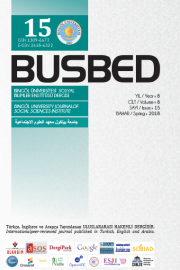SİLAHLI KUVVETLERDEKİ ROL YÖNELİMSEL DEĞİŞİKLİKLER: MOSKOS'UN KURUM-MESLEK MODELİNE YÖNELİK BİR DEĞERLENDİRME
Changes In The Role Orientations of The Armed Forces: An Evaluation On The Moskos’ Institution-Occupation Model
Author(s): Durmuş Ali YüssekSubject(s): Social Sciences, Education, Military history, Military policy, Vocational Education, Educational Psychology, State/Government and Education
Published by: Bingöl Üniversitesi Sosyal Bilimler Enstitüsü
Keywords: Armed forces; Institutional-Occupational model; Moskos; the draft; the all-volunteer force;
Summary/Abstract: The 20th century witnessed an era in which a quick transition occurred from the application of draft to the application of the all-volunteer force in the armed forces throughout the world. This trend still continues today. The transition in armies from draft to the all-volunteer force also has caused the institutional military understanding to evolve into an occupational military understanding. In this regard, the “Institutional-Occupational Model,” in which Charles C. Moskos claims that the armed forces has been in a gradual transition from an institutional model to an occupational model, is such as to shed light on the rapid changes occurring in the armed forces. In this respect, this study addresses the Institutional-Occupational Model, which might also shed light on the recent changes in the role orientations of the Armed Forces of many countries, examines the model’s current applications and criticisms towards it, and provides an overall evaluation of the model.
Journal: Bingöl Üniversitesi Sosyal Bilimler Enstitüsü Dergisi (BUSBED)
- Issue Year: 8/2018
- Issue No: 15
- Page Range: 515 - 536
- Page Count: 22
- Language: Turkish

